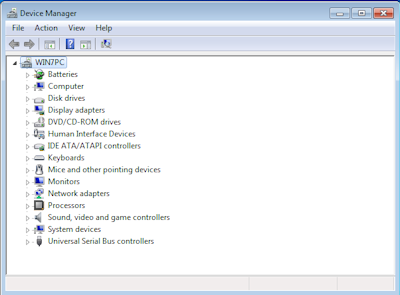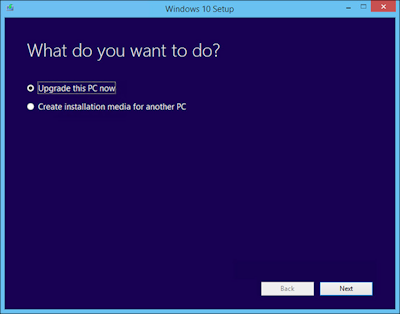
 |
Windows 7 Help |
1. What version of Windows can I upgrade Windows 7 to?
You can upgrade directly from Windows 7 to Windows 8 or 10. Alternatively, you can do a clean installation. A clean installation means that you do not keep your settings or applications. All your old settings, windows and programs will be moved to a C:\Windows.old folder. Make sure that your Windows is Activated, see the System control panel to see if it is activated.

Check which edition of Windows 7 edition you are running, then determine which edition of Windows 8 or Windows 10 you can upgrade to. For example, Windows 7 Home to Windows 10 Home or Pro.
2. What do I need to do before upgrading Windows?
a) Backup your data. You can use your own backup tools but make sure that the backup tool works in new Windows as well. You can also use a backup tool to backup and transfer your documents and settings to exteral storage. Another alternative, is just to burn your documents and settings directly to CD or DVD or copy them to an external storage device such as an external hard disk, USB stick or network storage.
b) Check your Hardware configuration. Make sure that your hardware is up to date and compatible with new Windows. Some very old hardware may need changing to allow it to work on newer version of Windows. If there are too many parts to change, then consider buying a new PC with Windows 10 instead.

c) Check your Software is compatible. Most recent programs will work, but you should check on the manufacturer's web site to see whether it will work on newer Windows. Any incompatible software should be uninstalled at this stage. Make sure that you have all the installation disks and downloads of the latest versions of your software available to either CD, DVD, USB, NAS or other storage. Also, make a list of URLs of where you can download the software again (see Control Panel, Programs and Features, and click on a program and look at the bottom for possible links).

Useful application links:
a) Microsoft Downloads
b) Microsoft Office
b) Adobe Creative Suite
c) Corel products
d) Utilities from FileHippo
e) Old Version
d) Check Hard disk space. You need plenty of free disk space to upgrade an existing Windows installation to a newer Windows. If you do not have enough disk space, then consider doing a 'clean install' which means erasing your hard disk and install Windows on to an empty hard disk.
e) Download latest drivers for your new version of Windows. Use Device Manager and note down drivers for things like graphics card, sound card, motherboard, network adapters as you may need them to successfully set up windows and if you need internet access afterwards. Also, try the Driver Easy tool.
3. How do I do an Upgrade to newer Windows?
a) Boot your PC and wait for the desktop to appear, if prompted, login to windows.
b) Insert the Windows DVD or USB installation media and allow Setup.exe to run. You can upgrade from Windows 7 to Windows 8 or 10. Select 'Upgrade Now' on the menu, Agree to the license terms, and then click 'Install'.

Follow the instructions on screen to complete the installation or upgrade.
4. How do I restore my settings and programs to my upgraded Windows?
Run your backup program, and use the option to restore your settings and documents to the new version of Windows. Any files and settings not transfer should still be found in C:\Windows.old\Documents and Settings.
Then reinstall the applications, programs or tools from any CDs, USB sticks, installation hard disk or from the web and it will install them to C:\Program files or C:\Program files (x86). 64 bit versions of Windows will have two Program files folders, one for 64 bit apps and the other for 32 bit (aka x86) apps.
5. How do I get my old programs to work on newer Windows?
Most programs will work on newer versions of Windows, although you may find the some will just need a newer version to get it to work. For the few that refuse to work on newer Windows, you can now use Virtualisation technology to run your old apps. Windows 8 and 10 includes Hyper-V which will allow you run 32 and 64 bit virtual environments. If you don't have the Pro versions of Windows, you can still install and use VirtualBox, or VMWare Player. The old Virtual PC or XP Mode software will not work on newer Windows, but any VHD files could be transferred and used with Hyper-V or VirtualBox.
Windows 8 and 10 does not come with Windows Media Center, instead there an alternative called Kodi which can be downloaded via the Microsoft Store.
If you have Office 2010 Starter then you can transfer that to a 8GB or USB drive to use on your new computer. See these instructions.
6. Can I migrate to another OS other than Windows?
Yes, it is always possible to migrate your data and applications to another operating system. Many people have migrated to systems such as Mac OS or Linux, rather than stick with Windows. To migrate requires a number of steps:
a) Evaluate your new Operating System either on new hardware or setup a dual boot with your existing system or use Virtual Machines to test the new OS.
b) Determine what application software is required on your new operating system. Look into emulators or virtual machines to run incompatible software.
c) Backup and restore or copy data to your new system. Perform any conversions to new formats if required.
d) Retire the old system.
7. When does support for Windows 7 officially end?
Windows 7 SP1 support will end January 14 2020. See this what is this means for you.
Return to Windows 7 menu.